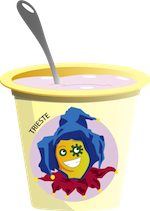Team:Trieste/parts/5
From 2012.igem.org
(Difference between revisions)
Samarisara (Talk | contribs) |
|||
| Line 81: | Line 81: | ||
<li><a href="https://2012.igem.org/Team:Trieste/parts/3">BBa_K875003 - CymR</a></li> | <li><a href="https://2012.igem.org/Team:Trieste/parts/3">BBa_K875003 - CymR</a></li> | ||
<li><a href="https://2012.igem.org/Team:Trieste/parts/4">BBa_K875004 - OmpA scFv</a></li> | <li><a href="https://2012.igem.org/Team:Trieste/parts/4">BBa_K875004 - OmpA scFv</a></li> | ||
| - | <li><a href="https://2012.igem.org/Team:Trieste/parts/5">BBa_K875005 - OmpA SIP</a></li> | + | <li class="select"><a href="https://2012.igem.org/Team:Trieste/parts/5">BBa_K875005 - OmpA SIP</a></li> |
<li><a href="https://2012.igem.org/Team:Trieste/parts/6">BBa_K875006 - PelB scFv</a></li> | <li><a href="https://2012.igem.org/Team:Trieste/parts/6">BBa_K875006 - PelB scFv</a></li> | ||
<li><a href="https://2012.igem.org/Team:Trieste/parts/7">BBa_K875007 - PelB SIP </a></li> | <li><a href="https://2012.igem.org/Team:Trieste/parts/7">BBa_K875007 - PelB SIP </a></li> | ||
Revision as of 08:51, 26 September 2012
BBa_K875005
More
Description

This construct is designed for the expression of an already descibed engeneered antinorovirus (NoV) monoclonal antibody (mAb 54.6) in fusion with LPP-OmpA. The antibody is expressed in a small immuno protein (SIP) format containing light (VL) and heavy (VH) variable domains separeted by a flexible peptide linker and constant domain (CH3) of heavy chain of human immunoglobulin A (IgA). It has already been reported that the scFv 54.6 (which compones SIP) binds a native recombinant NoV particles (VLPs) and inhibits VLP interaction with cells. Alpha isotype CH3 domain homodimerizes confering bivalent binding properties to the antibody. LPP-OmpA functions as a leader sequence and an anchor to display the scFv ot the bacterial surface.
The construct consistes of T5 Lac Operator (Bba_K875002), ribosomal binding site, LPP-OmpA, scFv 54.6 antinorovirus, Hystidine tag (6HIS), Terminator (B0015).
The expression of chimeric protein LPP-OmpA-SIP 54.6-6HIS is regulated by T5 Lac Operator (Bba_K875002). When the promoter T5 Lac O is induced with IPTG (1mM), the fusion protein LPP-OmpA-SIP 54.6-6HIS is expected to be expressed extracellularly on the bacterial surface. LPP-OmpA introduces itself into outer membrane displaying extracellularly antibody attached on its C-terminus.
Molecular Weight: 60 kDa.
Assembly
Obtained by synthesis
Results
The cloning success has been verified by Colony PCR. (Fig. 1) The construct has been completely sequenced.
FIG.1 Electrophoresis in gel 1% agarose whit ethidium bromide of T5LacO-LPP-OmpA-SIP-6His-TT (blue selection). Fragment LPP-OmpA-SIP-6His-TT, previously double digested in XbaI/PstI, has to be cloned downstream the T5LacOperator in plasmid pSB1C3 double digested in SpeI/PstI.
The construct was tested in E.coli W3110 strain which was previously trasformed with p-REP 4 encoding for the T5 Lac Repressor. The recombinant bacterial colonies were induced at O.D.= 0.4 (2x102 bacterial cells/ml) with IPTG (1mM) at 37°C in shaker. 2ml of bacterial culture was centrifucated and the pellet was resuspended in 200μl of lysis buffer. The samples were then sonificated and boiled for 5 min at 95°C. 10μl of lysates of induced, non-induced and non trasformed bacterial coltures were resolved on SDS-PAGE. The expression of fusion protein LPP-OmpA-scFv 54.6-His was tested by Western blotting with anti-6HIS antibodies (Fig. 2).
FIG. 2. Expression of SIP 54.6 cloned in fusion with the LPP-OmpA leader sequence. Western blots of lysates of E.coli W3110 bacterial strain expressing the recombinant protein SIP 54.6 (60KDa), induced or non-induced with IPTG. The blot was reacted with the Affinity purified antibody goat anti-Human IgA(α).
Western blot with anti-6HIS antibodies showed the band corresponding to SIP 54.6 at the expected position in the IPTG-induced sample. In the non-induced sample, a weaker signal is also detected suggesting that the promoter is leaky; aspecific signals are also visible. Some of them are due to proteins partially degraded.Reference:
1. “Transport and anchoring of 8-lactamase to the external surface of Escherichia coli” J. A. Francisco, C. F. Earhart and G. Georgiou. Proc. Natl. Acad. Sci. USA Vol. 89, pp. 2713-2717, April 1992 Biochemistry.
2. “Recombinant norovirus-specific scFv inhibit virus-like particle binding to cellular ligands” K. Ettayebi and M. E. Hardy. Published: 31 January 2008 in Virology Journal 2008, 5:21
Looking forward
Link to the Registry







 "
"









